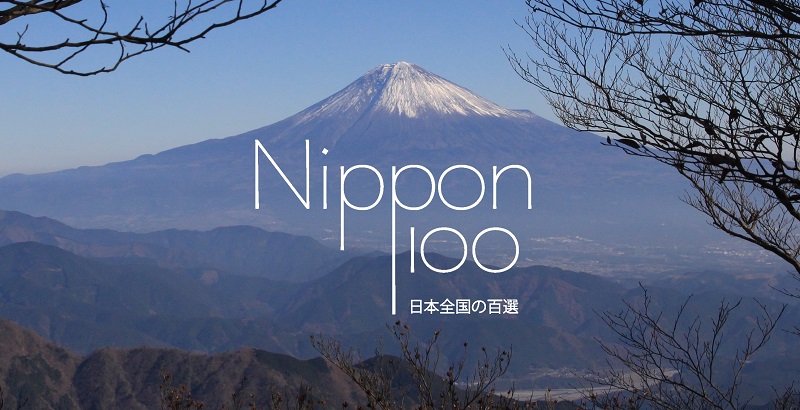Yet in the same prefecture than the former capital city, the Heaven’s bridge is not a must-see for most of the travelers. In the same time, Amanohashidate is visited each year by three millions of Japanese tourists… And the sandbar is not the only treasure of Kyoto’s unknown seashore.
Japanese officials understood that two years ago: the coastal and Northern part of Kyoto’s prefecture might easily become a popular destination among foreigners, but is not yet.
That’s why the “Kyoto by the sea” label was created in 2015, to promote that unknown area of Japan among foreign tourists. Nippon100 had at least three reasons to go there. First Amanohashidate is one of the 100 landscapes of Heisei Era. Second the sight is also one of the three most beautiful view of the country. And another landscape was only one hour by bus: the houseboats of Ine.

The main attraction of the Tango peninsula is definitely Amanohashidate, whose name literally means “Heaven’s bridge”. The long sandbar covered with maritime pine trees is 2,5 km long and is responsible of the Asoumi Sea in the deep end of Miyazu bay. Speaking of geomorphology, the landscape is a tombolo, a deposition landform created by the waves.
Among Japanese, Amanohashidate is famous since the first years of the 17th century. At that time, Edo scholar Hayashi Razan elected the place as one of the three most beautiful views of the country. Along the super famous Miyajima island tori, not far from Hiroshima, and the really less famous Pine-clad islands of Matsushima in Miyagi prefecture.

 |
 |

At the time of Hayashi Razan’s writings, the sandbar was not as long as nowadays, leaving a wider pass through Asoumi Sea. That’s why the most ancient representation of the the sight, by Shesshu Toyo and contemporary from the scholar, is slightly different from what one might see today.
“For a long time, the most famous view was seen from the Bay, while sailing”, Seiichiro Tokuda told Nippon100. His family as been ruling Seikiro ryokan in the neighboring Miyazu city for now 13 generations (almost since the beginning of Amanohashidate being famous!). “Then the views from the hills became gradually famous during the 20th century, as it began to be easier to circulate around them.”

 |
 |

Matanozoki, head between legs
A lot of visitors like to experience the Matanozoki posture, which truly allow to discover Amanohashidate as a bridge in the sky and no more as a simple sandbar. “It is difficult to distinguish the sky and the sea from that point of view”, Seiichiro Tokuda explains.

A convenient way to cross the sandbar is to rent a bike (plenty of choices on each side, about 400yens for 2h). Otherwise, walking takes about one hour. And a bus runs around Asoumi Sea (the long way) for 400 yens one way.

 |
 |
Many temples and shrines are to be found on the two sides of Amanohashidate. On the South, the station-area, the Buddhist wisdom deity Monju is worshiped. And on the North, the Motoise Kondo shrine is really important in Shinto. As in the grand Ise famous one (in Mie), Amaterasu and Toyoukehime are honored there.
An unusual record belongs to the small shrine: the main priest’s family owns the oldest family tree in Japan, a national treasure. It has now been 82 generations that the Amabe family is taking care of Motoise Kondo.
Making a stop in Miyazu
The station just before Amanohashidate is Miyazu’s. The biggest town around is a convenient base to explore, only a few kilometers away from the sandbar. Seiichiro’s ryokan is there.


The town is home of the oldest catholic church of Japan, where services are still hold every sundays. The wooden church was built by a French, Father Louis Relave (free entrance, everyday from 9am to 5pm).
 |
 |

 |
 |
Finally the town soul noodles are quite unusual: Miyazu is known for the Curry Yakisobas that can be found in a dozen of restaurants, between 500 and 900 yens.
How to get there ?
Reaching Amanohashidate is easier from Osaka or Kyoto. In any case, the trip takes about 2 hours one way. From Kyoto station : JR Hashidate line and Tango Relay (with a change in Fukuchiyama), around 4700 yens. From Osaka : JR Kounotori until Fukuchiyama, and then the Tango Relay, around 5580 yens. By bus, the trip is slightly cheaper (2800 yens from Kyotoekihachijoguchi and 1870 yens from OCAT in Osaka Namba to Fukuchiyama).





